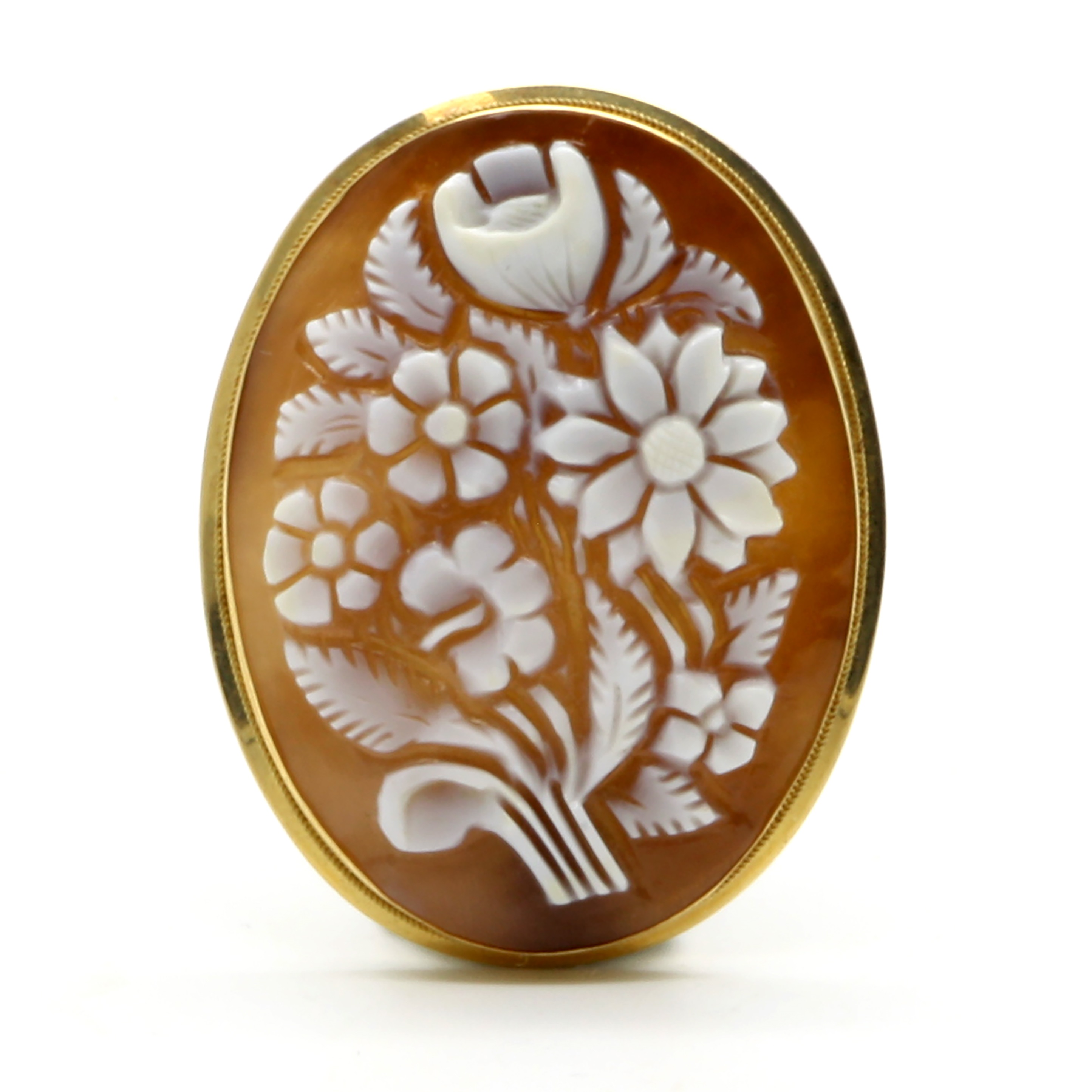Cameos
Cameos are distinguished by raised relief images, which are intricately carved
17/04/2025 Blog
In almost every jewellery auction here at Sheffield Auction Gallery we offer pieces of cameo jewellery but have you ever thought about their history and how they are made?
You have probably seen cameo jewellery in period dramas, museums or even in a relatives jewellery box they are individual works of beauty and very collectable today. Cameos hold a unique place in the world of antique jewellery their rich history and intricate craftsmanship are much sought after.

Cameos are distinguished by raised relief images, which are intricately carved from materials such as shell, coral, agate, or onyx. The technique which makes use of the natural contrasting layers of material, known as 'a due strati', dates to the ancient Greeks and Romans. The picture was prominent in the upper layer of the stone standing out from the bolder colour below. Cameos frequently portrayed classical scenes of mythological figures, portraits, or religious iconography, delicately etched into the surface of the material.
In the ruins of Pompeii petrified lava became the new material for carvers. The ruins were discovered in 1748 and the cameos began to be sold as souvenirs to tourists. These detailed reliefs were put into decorative pieces of jewellery, such as necklaces, brooches, bracelets and even rings. Early cameos were inspired by prehistoric petroglyphs, which were rock carvings or paintings made by pecking onto the rock surface.
The classical revival of the 19th century which sought to incorporate classical elements into art, architecture, and fashion was popular with Nobility and prominent people of the day Jewellery such as cameos were often worn to show off a person’s wealth. Napoleon Bonaparte was hugely interested in cameos and brought many back from Italy even incorporating cameos into his Coronation crown in 1804. The shell cameo that we are familiar with today featured heavily in jewellery of this period, particularly brooches which were often set in gold.
Skilled craftsmen such as the Italian Tommaso Saulini, were revered for their exceptional skill and artistic vision. Saulini's cameos often feature classical themes and portraits which were commissioned by aristocrats visiting Europe on the Grand Tour. His detailed and beautiful work was commissioned by Queen Victoria and Prince Albert and sits today in the Royal Collection and the V&A museum.
There is a lot of meaning and symbolism with cameo jewellery. Many people believe cameo jewellery has the power to warn off evil spirits. Cameos are also said to bring good luck and fortune to those that wear them.
Of course, the value of a cameo brooch can vary widely depending on several factors, including the quality of the carving, the material used, the condition of the piece, and its provenance. However, it is true to say that cameo jewellery remains highly fashionable today, featuring in recent collections by Dolce & Gabbana and Liz Swig, and this is reflected in the popularity of pre-loved pieces.
So if you have any cameo jewellery you are thinking of selling or just want to know more about your treasured pieces our specialist valuers here at Sheffield Auction Gallery are always happy to assist you.